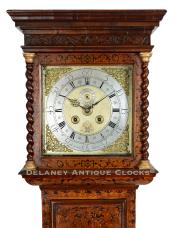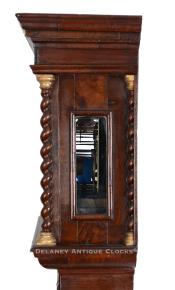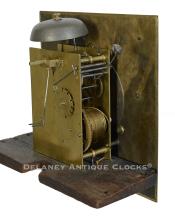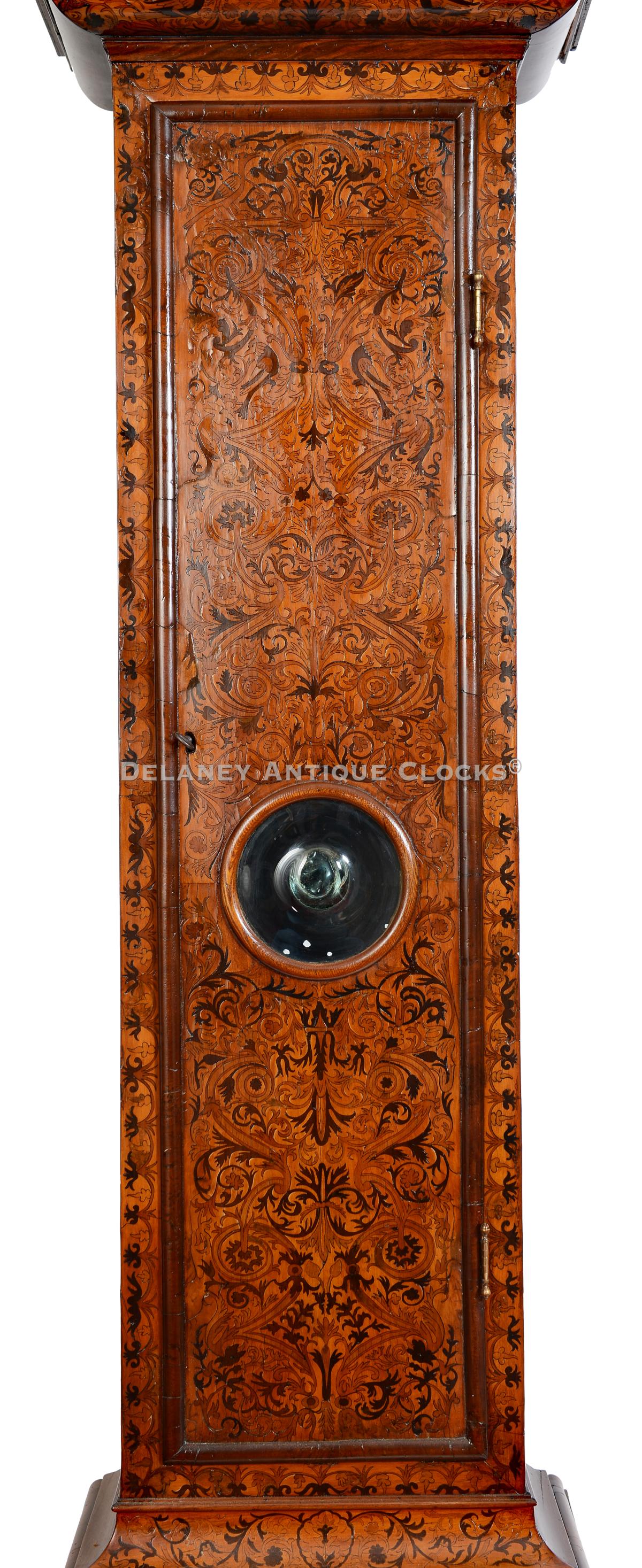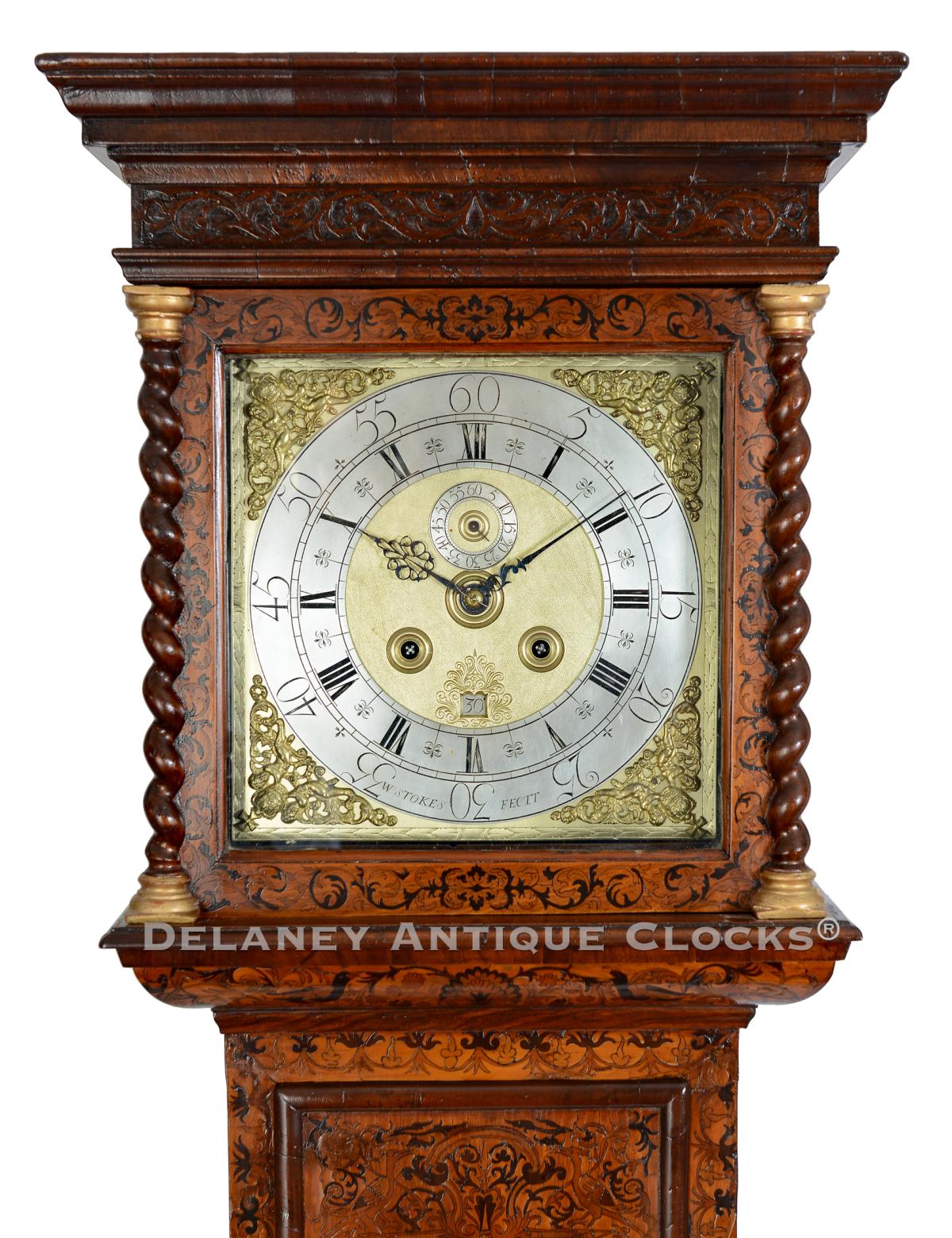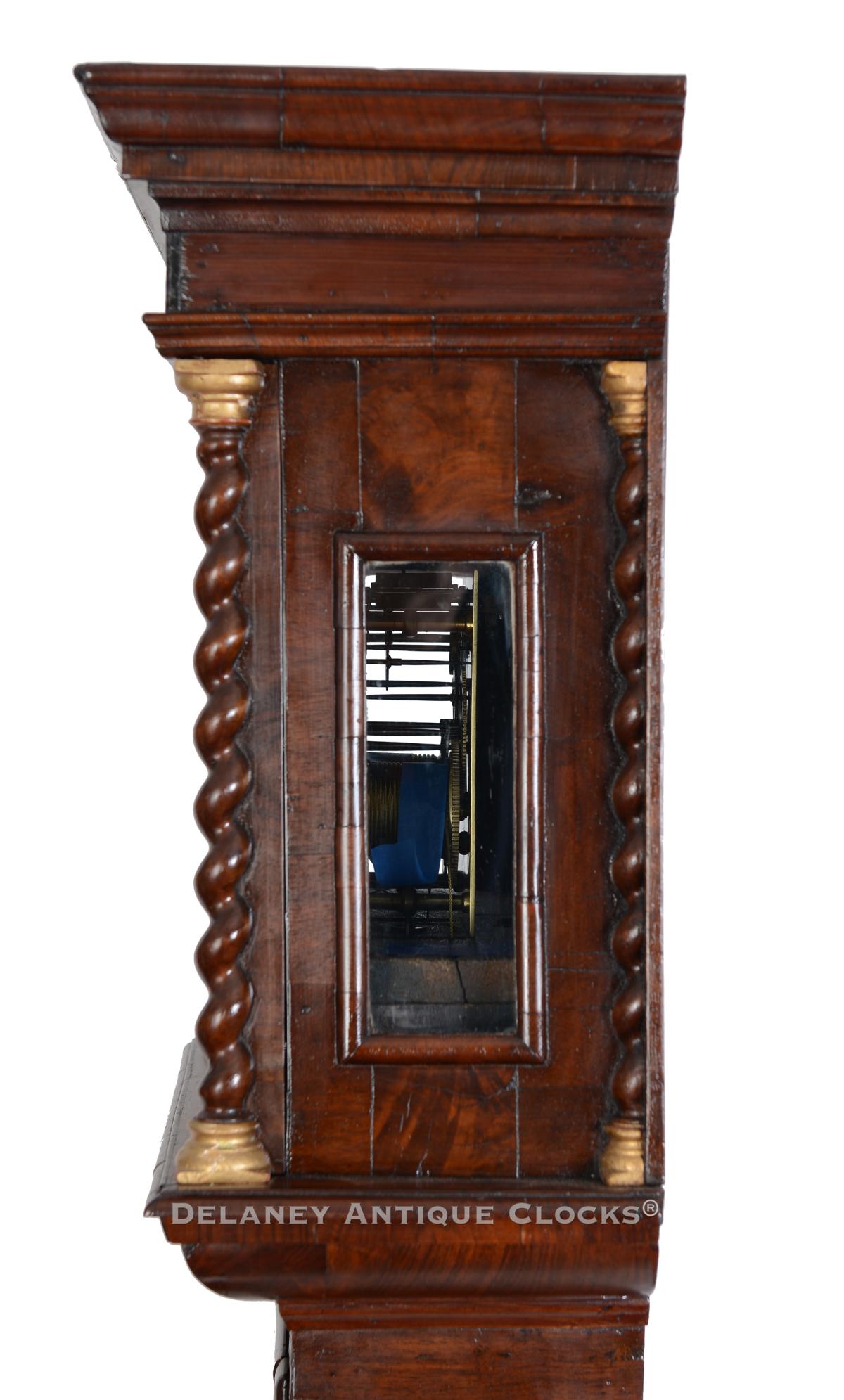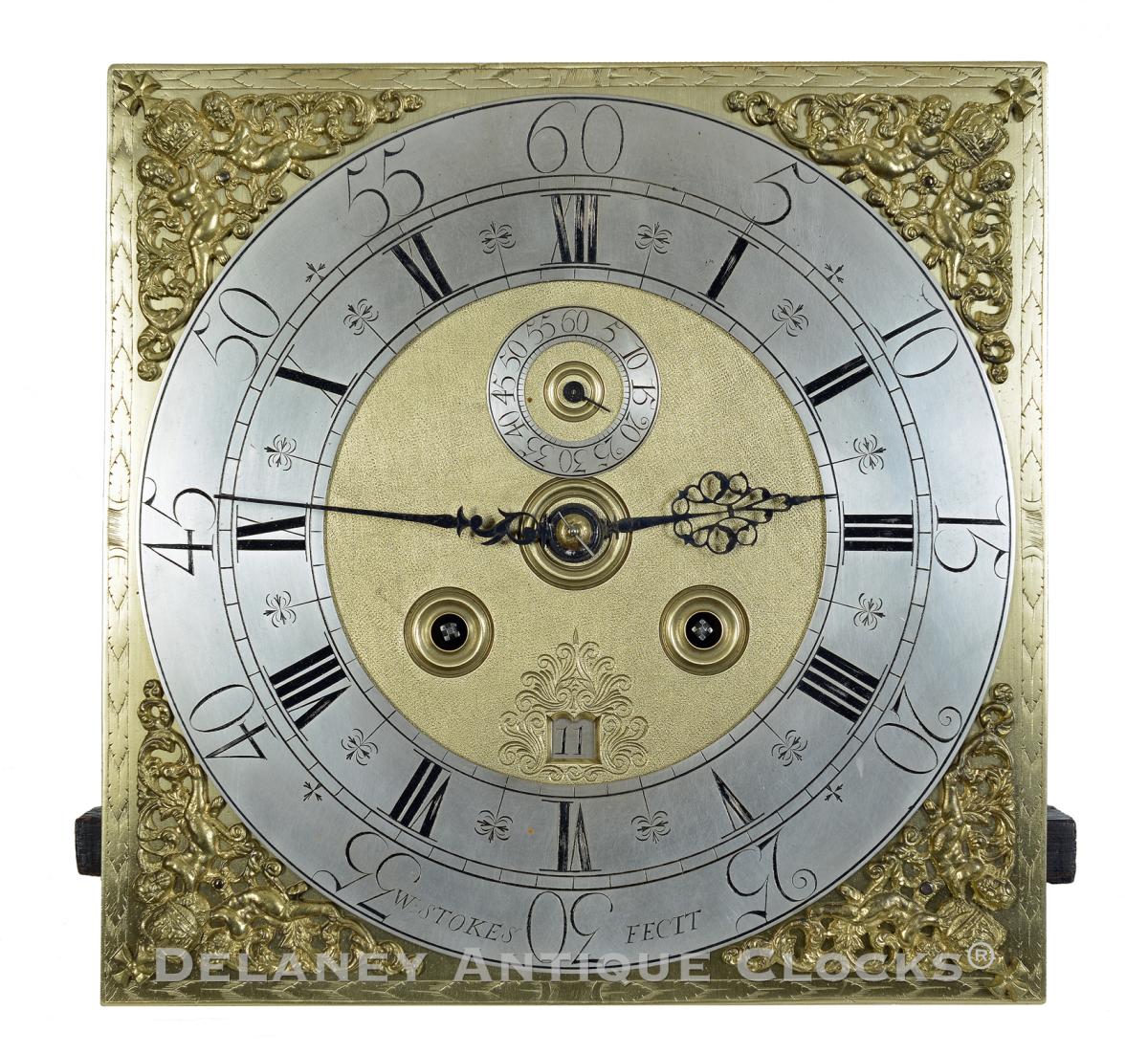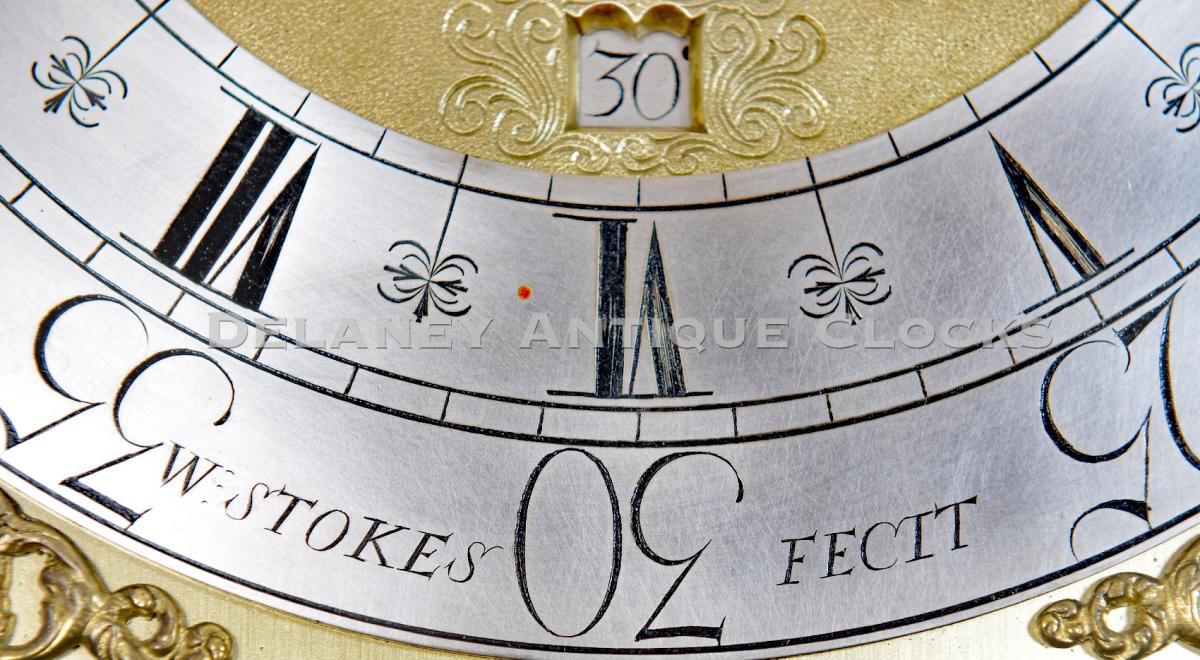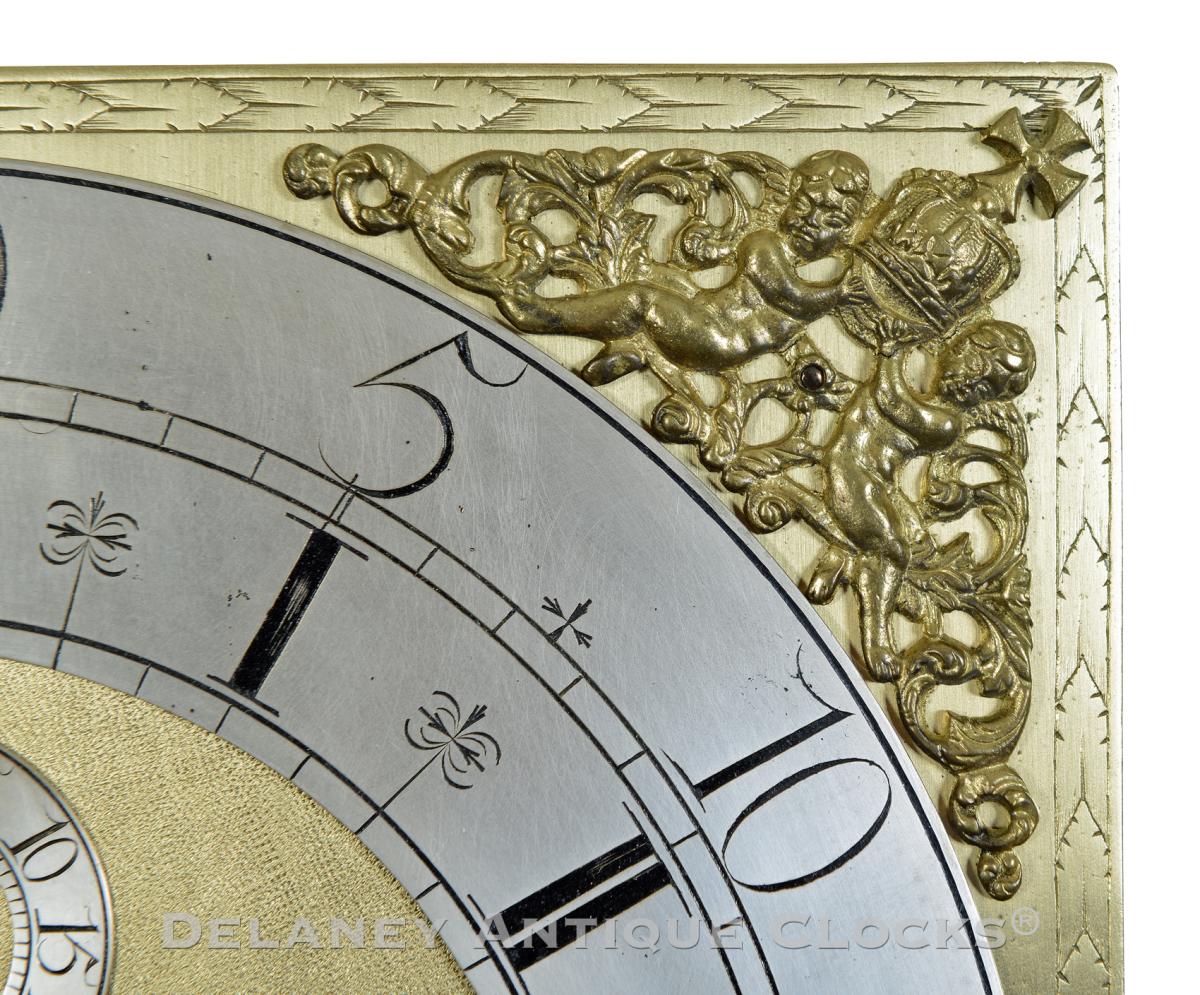William Stokes Feict. An early 18th-century London walnut longcase clock, embellished with fine arabesque marquetry. It features a 90-day movement designed to run for three months before rewinding, a rare and impressive feature. YY-14.
William Stokes worked in Stourbridge, formerly Old Swinford. (Worcestershire). Stourbridge is about 12 miles (19 kilometers) west of Birmingham. He was born about 1679. It is not currently known who he served under his apprenticeship. He married Mary Golding at Chaddesly Corbett, Worcestershire, on the October 26, 1700. They had nine children: 1701 Mary (died young), 1702 William, 1703 James (Died 1705), 1706 John, 1708 Elizabeth, 1709 George (died 1710), 1711 Mary, 1713 Ann (died 1713), 1716 Stephen, and Sarah. In 1715, William took Nathan Hickman as an apprentice. He also trained at least 5 of his sons. William died in 1730.
This case has typical proportions for a clock made during this early period of clockmaking. Clocks of this period tend to be narrow in proportions and constructed on a smaller scale compared to examples made 100 years later. This example stands approximately 7 feet 2 inches or 86 inches tall and is 19.25 inches wide at the broadest molding. This case represents one of the first forms designed with a 12-inch square dial.
The weight-driven movement is constructed in brass and designed to run for NINETY days between windings. One has to wind this clock only four times in a year! It will also strike each hour on a bell mounted above the movement. The strike train features a count-wheel mounted on the outside of the backplate. Both winding barrels are grooved. Five knobbed and finned-turned pillars support the large brass plates. The escapement is a recoil design and features a seconds-length pendulum. Overall, this movement is of excellent quality. The fact that it survives today in excellent working order is proof of this.
The twelve-inch square brass dial is decorated around the perimeter with an engraved herringbone border. Applied decorations include the four cherub-and-crown cast brass spandrels and engraved time and seconds ring. The engraved chapter ring frames the matted dial center. This center section is textured in an attempt to make the finely formed steel hands more visible when viewing the dial. The date aperture is chamfered and framed with decorative cartouche engraving. The two winding arbor holes, the center arbor hole, and the seconds hole are decorated with ring turnings. The applied time ring is engraved with an interior minute ring, Roman hour numerals, a second-minute ring located outside the hours, and five-minute markers in Arabic form. The chapter ring is also decorated with sword hilt half-hour marks and cross half-quarter marks. The time ring, seconds ring, and calendar are finished in silver for contrast.
The case is constructed in oak and is decoratively veneered in richly figured walnut. This elaborate inlaid decoration is called Marquetry and was all the rage in London. Separate pieces of veneer, often colored, are laid out in decorative patterns. The marquetry formatting exhibited in this example floral scrolls and birds. This example features numerous pieces of wood laid out in long, complex patterns. Florals and long chain patterns are also included in this design and as borders. All of these are displayed on the forward-facing surfaces of the case. Please note the uneven surface of this design caused by the shifting of the oak substructure and the shrinkage of the veneer. This is a telltale sign that this case has age and is not a reproduction.
The fine example stands flat on the floor on an applied veneered molding attached to the base. The inlay design in the base is bookmatched. And frames with a vine border. The inlay decorated molding that transitions the base to the waist is a concave shape. The waist door is quite large and fills the waist section. It is trimmed with applied molding and also features a circular cutout fitted with glass. This window feature is called a “Lenticle.” Its purpose is to allow one to view the pendulum bob's motion without opening the clock's door. It also informs the admirer that this clock is fitted with a long pendulum, which was new technology for the day. The sides of this case are decoratively finished. They are paneled as was the tradition of many London cabinetmakers. The upper waist molding is in a convex form and is inlaid with floral patterns. The bonnet features a wide cornice molding, a blind or pierced fret pattern that is backed in colored silk, a hood door that is framed with barely-twist three-quarter columns, quarter columns in the back corners, and rectangular-shaped glass side lights. The glazed door is inlay decorated.
This unusual, early, long-case clock, made around 1710, is a significant artifact from the early 18th century.
Inventory number YY-14.




